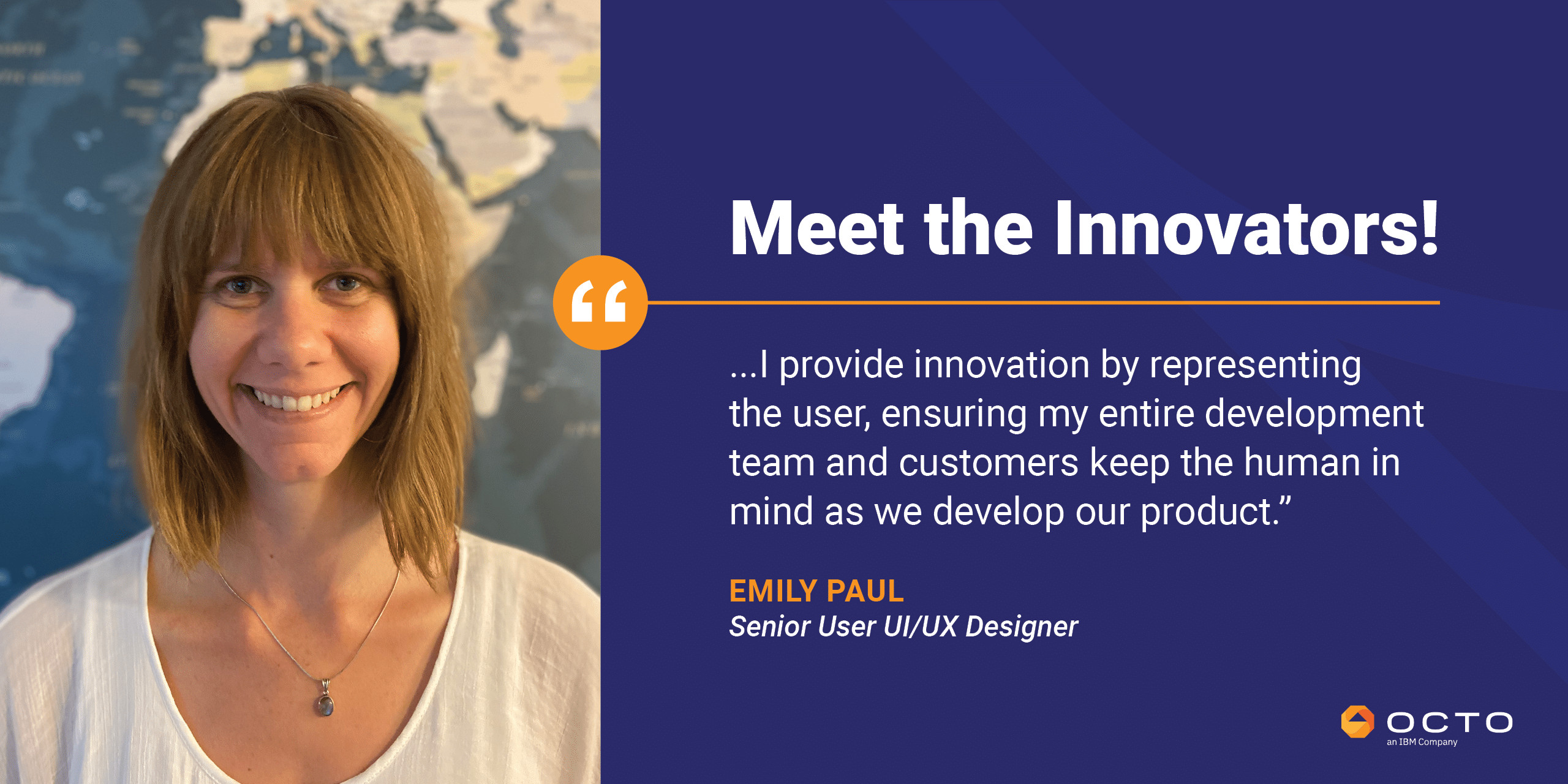
Welcome back to Meet the Innovators, where we feature the thinkers and doers making great things happen for Octo’s customers who serve the people of our nation. Today we’re interviewing Emily Paul, Senior User Interface/User Experience (UI/UX) Designer supporting Octo’s National Security and Federal Civilian business unit. Emily has been with Octo for 18 months and works with a team focusing on immigrants’ public applications through United States Citizenship and Immigration Services (USCIS).
Emily, thank you for taking the time to speak with us about your important role at USCIS. How would you describe the work you do for Octo?
I get to work on a highly exciting project with USCIS that is focused on providing value to applicants who are navigating through the immigration experience. As the designer working within my development team, I am tasked with identifying critical user flows for our mobile application, highlighting possible friction points and error paths while simultaneously discovering efficient solutions. My role involves regular collaboration with our developers, solution architect, and federal leadership. I get the pleasure of designing interactions and behaviors of our app, as well as the overall visual design. I also devote considerable time to research, both secondary research and primary research through usability testing.
Sounds like a fulfilling role where you get to practice innovation. That brings us to our next question. How would you define “innovation”?
In a broad sense, I define innovation as the capacity to look at obstacles without limitation, starting from an out-of-the-box, divergent viewpoint to find solutions and then slowly converging in to discover the best answer for a problem. In a more specific sense within my team, one of the biggest ways I provide innovation is by representing the user, ensuring my entire development team and customers keep the human in mind as we develop our product.
How does your job support/promote innovation needed for customers to jump the technology curve?
A large part of a UI/UX Designer’s job is having the courage to ask “Why?” At minimum, this simple question can help us reflect on historical decisions to ensure they still hold relevancy. I’ve also found that asking it can sometimes help us discover more meaningful solutions to complex challenges. While there are constraints within any development team and business model, asking “Why” helps us decipher which of these constraints are self-imposed and empowers us to think big.
What is one project or challenge you have taken on, and what is your approach?
Beyond the day-to-day design work that I do, a “project” that I am very proud of are my efforts to educate colleagues and customers on the value of UI/UX. Many of my team members and federal customers have no prior experience on a development team with a UI/UX designer. I take the role of educating them very seriously, whether through direct explanations in meetings or through the tools and expertise I offer in an ongoing basis. In my time working with my team, I have shifted multiple mindsets from thinking a designer just “makes it pretty” toward viewing a designer as an integral team member who adds critical value for both users and business priorities.
What advice would you give to someone starting out in the industry?
There is nothing wrong with being wrong. The most outstanding colleagues I have worked with are the ones who are courageous enough to speak up with new ideas and simultaneously admit when their idea won’t work or when they don’t know something.
Do you enjoy making a positive difference for the public? Does innovation motivate you to continuously learn and excel? Octo offers an inclusive culture of growth with opportunity to make an impact. Visit our Careers page for details on remote and on-site positions. Veterans start here to explore mission-centric work that matters.


